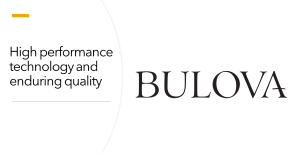IFI 2022 Study Pegs IRR Industry at $176 Billion
The preliminary results are in from the 2022 Incentive Federation Inc. (IFI) Research Study: industry sales totaled $176 billion in 2021, a 49% increase since the last study was published six years ago in 2016. Reflecting the importance of experiential rewards, this category was added to the study for the first time.
The Incentive, Rewards, and Recognition (IRR) field with $176 billion in sales last year is larger than the US personal computer market of $145.2 billion, according to the preliminary report on the 2022 Incentive Federation Research Study, the first since 2016. The results were announced by Mike Donnelly, IFI  Board Chairman and President of Hinda Incentives, a master fulfillment and incentive company, at the 2022 annual summit of the Incentive Marketing Association.
Board Chairman and President of Hinda Incentives, a master fulfillment and incentive company, at the 2022 annual summit of the Incentive Marketing Association.
Read RRN e-newsletters or follow the Incentive Federation on Linkedin for the detailed report to be published later in the summer. For detailed background on the state of the IRR industry, see RRN: 2022 Mid-Year Market Report Finds Industry Pised for Continued Growth Despite Recession Risk.
The 2022 study tracks spending on sales, employee, channel/distributor, and customer loyalty incentives and corporate gifting in 2021. The industry estimate represents a 49% increase over the $90 billion estimate provided in the IFI’s 2016 study. The study finds that 84% of businesses with at least $1 million in sales reported using at least one form of non-cash incentive. The use of non-cash incentives within companies with $5M in revenues or greater is 92%, the study finds.
According to the Incentive Federation, the study, conducted in May 2022, sought responses from companies that use incentive tools and services such as award points, gift cards, travel and trips, merchandise (both branded and logoed).jpeg) and experiential awards (which were included for the first time in this latest study). Richard Garlick and Associates Consulting and Market Research Services, LLC conducted the study for the IFI.
and experiential awards (which were included for the first time in this latest study). Richard Garlick and Associates Consulting and Market Research Services, LLC conducted the study for the IFI.
According to Garlick, the latest results reflect an update of the methodologies used and demographic and economic differences from the previous study.
- The previous iteration of the study asked respondents to identify their incentive expenditures using ranges, rather than asking for specific estimates.
- The current study used simulations that incorporated data variability.
- The number of US-based companies with $1 million or more in annual revenue has increased from the census company numbers used in the 2016 study
- The experiential reward category was added.
- Inflation was considered as a factor.
Education, Certifications, and Information to Activate
Brand Media and Enterprise Engagement
A complete learning, certification, and information program and a course syllabus for educators.


















